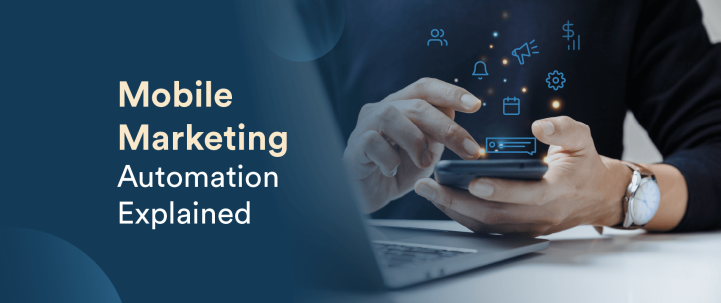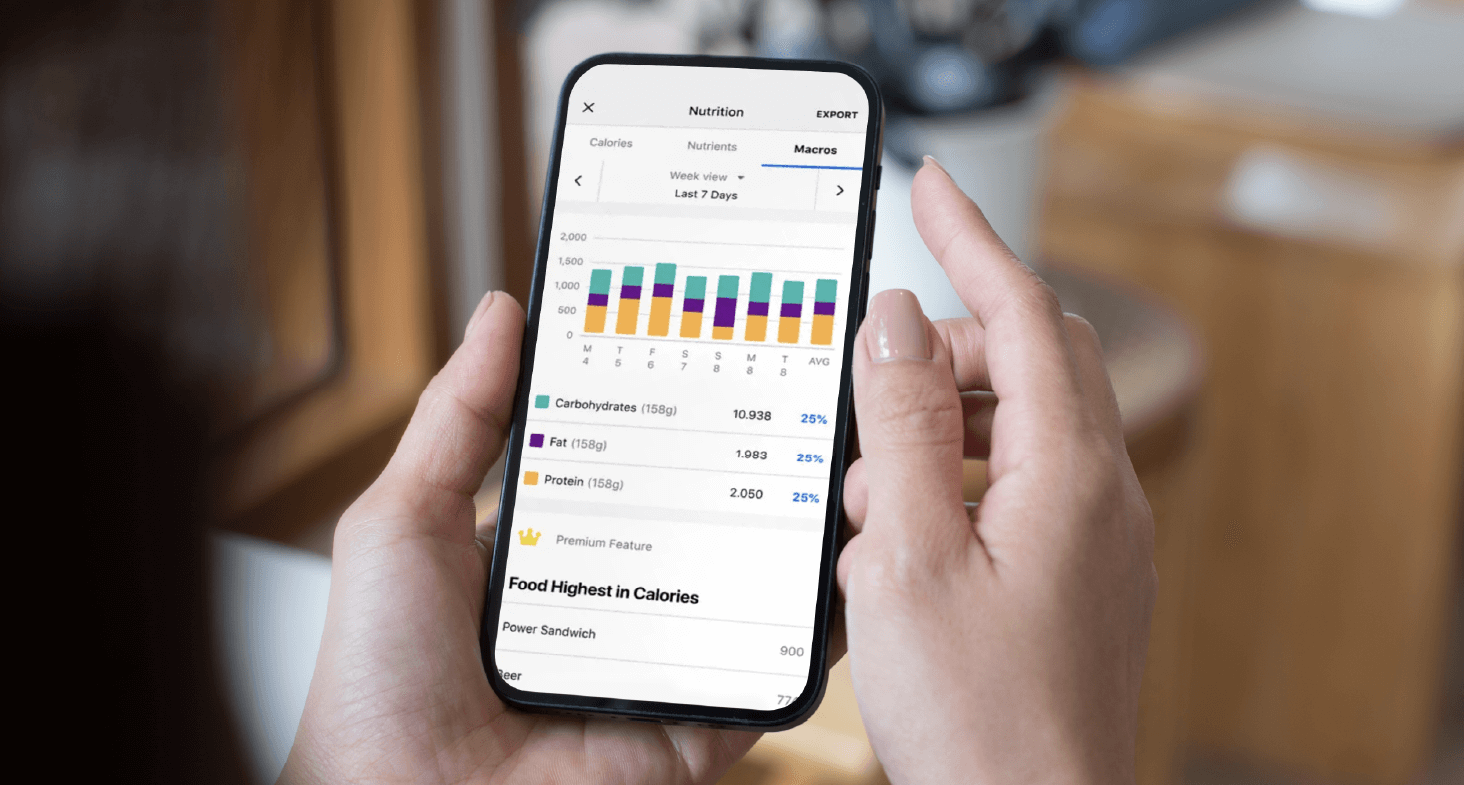As an increasingly crowded arena of apps compete for user attention, automation is your secret weapon for staying one step ahead. Our 2024 Mobile Marketing Automation Guide uncovers the latest strategies to keep your users hooked and your marketing smarter.
Consumers are more engaged with their smartphones than ever before. Recent studies show that the average mobile user spends about 4.5 hours per day on their phone, and that number is only expected to increase. With this shift, businesses have an unprecedented opportunity to engage customers directly through their mobile devices.
However, meeting users’ growing demand for personalized, relevant content at scale is no small feat. This is where mobile marketing automation steps in. On average, companies that use marketing automation see a 14.5% increase in sales productivity and a 12.2% reduction in marketing overhead.
With the mobile marketing automation industry expected to reach $19.8 billion by 2027, businesses that fail to adopt this strategy risk falling behind. From reducing churn to driving higher engagement rates, mobile marketing automation is more than just a tool—it’s become a non-negotiable necessity for staying competitive in the modern market.
What is Mobile Marketing Automation?
With mobile marketing automation, businesses let software do the heavy lifting for repetitive marketing tasks like personalized messages and app notifications. It requires little human intervention, so marketing teams can scale their outreach with minimal drain on team resources.
Mobile marketing automation empowers brands to engage with users on a deeper level by delivering relevant content based on behavior, preferences, or actions taken within an app. Instead of sending the same message to every user, automation tools can customize and time these interactions to fit each person’s unique journey.
Imagine you’ve just downloaded a retail app. Over the next week, you’ll likely receive a welcome email with a discount code, followed by a push notification suggesting products based on your browsing history. None of these interactions are random. They’re part of a larger, automated system designed to engage you and keep you coming back. That’s the essence of mobile marketing automation: smarter, more personalized engagement at scale.
Benefits of Mobile Marketing Automation
Hands down, the strongest selling point of mobile marketing automation is the efficiency it brings to any marketing strategy. Instead of needing a team to monitor and respond to users’ actions, you can simply use automation to pre-set triggers and actions. Users then receive engaging, relevant content immediately without draining your marketing resources. But the advantages don’t stop there:
- Personalization: Automation tools can track user behavior and preferences to send personalized recommendations and offers. This kind of tailored messaging makes users feel valued, which leads to higher engagement and loyalty.
- Consistency: Automation ensures that no user falls through the cracks. Everyone gets timely updates and offers that are right for them without any manual oversight.
- Scalability: Whether you have 100 users or 100,000, automation scales easily. You don’t need to hire more people as your user base grows; the system handles it for you.
- Data-driven optimization: Automation platforms collect detailed insights on how users interact with your messages, allowing you to tweak and optimize future campaigns for better results.
- Omnichannel Integration: One of the biggest challenges for businesses is delivering a unified experience across customers’ channels. Mobile marketing automation simplifies omnichannel marketing by unifying these touchpoints into a single platform. This ensures consistent messaging throughout your mobile app, website, and email campaigns. It creates a cohesive experience that keeps customers engaged and optimizes their journey with your brand.
Ultimately, mobile marketing automation helps businesses build stronger connections with users while saving time and resources.
Types of Mobile Marketing Automation
The different kinds of mobile marketing automation each serve a specific purpose, and together, they allow businesses to communicate with users in a meaningful, personalized way. Here is how each approach works:
User-based automation focuses on delivering messages tailored to specific user demographics or preferences. This could include location-based offers or content targeting gender. One example is how fitness apps send different workout suggestions to users based on their fitness level and goals.
Event-based automation is triggered when users perform specific actions, like signing up for a newsletter or abandoning their shopping cart. It’s about responding in real time to user activity. A classic example of event-based automation is when someone downloads your app but doesn’t complete a purchase. The automation software would then send them a reminder or offer a discount to nudge them toward conversion.
Predictive automation goes a step further by using machine learning and data analysis to anticipate user behavior before it happens. This can include sending reminders about products users will likely buy or suggesting content based on past behavior. For instance, Netflix’s recommendation system is a classic example of predictive automation, where the platform suggests shows based on your viewing history.
Behavioral automation focuses on user engagement with your app, tracking how users interact and adjusting messaging accordingly. If a user spends a lot of time browsing certain products but hasn’t purchased them, behavioral automation could send them a targeted message with a special offer on those items.
Getting Started with Mobile Marketing Automation
Implementing mobile marketing automation may seem like a massive undertaking at first, but it’s a manageable process if you take it step by step. Here’s a roadmap to guide you through:
- Define your objectives: What do you want to achieve with automation? Is it increased app engagement, higher sales conversions, or better user retention? Clear goals will inform your strategy.
- Choose the right platform: Not all automation tools are created equal. You’ll want to select a good customer engagement platform that fits your needs, whether that’s advanced segmentation, real-time analytics, or integration with your current CRM system. There are many possible platforms, but each has its own strengths, so research carefully.
- Segment your audience: To maximize personalization, you’ll need to divide your users into segments based on behavior, preferences, or demographics. For example, you might create a segment for new users, loyal customers, or users who have abandoned their shopping carts.
- Design your automation workflows: Automation isn’t just about sending one-off messages. It’s about creating entire workflows that guide users through their journey. You’ll need to decide what triggers particular messages—whether it’s signing up, making a purchase, or not engaging for a set amount of time.
- Create engaging, personalized content: Once you set up your workflows, it’s time to craft the actual content of your messages. Personalization is the name of the game when crafting content. Users need more than simply being addressed by their first name; they need to feel like the message is relevant to them, not just another automated blast. Focus on clear, concise, and engaging copy that resonates with each segment of your audience.
- A/B test: Always test your messages before scaling. Minor tweaks to your copy, call-to-action, or timing can have a massive impact on engagement. Testing helps you identify what works best for your audience.
- Use real-time data analysis: Real-time analytics track how users are interacting with your campaigns. This lets you adjust on the fly and improve performance before the campaign ends. Don’t rely solely on past data; what’s happening right now can be just as important.
- Optimize campaign timing: Even the best message can fall flat when sent at the wrong time. Ensure you’re sending messages when your audience is most likely to engage, whether that’s during their morning commute or right after lunch.
- Monitor and Iterate: After launching your campaigns, don’t just set it and forget it. Use the platform’s built-in analytics to track performance. Are users responding to your messages? Is there a noticeable lift in engagement? Based on this data, you can fine-tune your strategy for better results.
Mobile Marketing Automation Business Examples
The power of mobile marketing automation lies in its ability to transform user engagement across a wide range of industries. Brands use it to create customized, meaningful interactions at scale, turning first-time users into long-term loyal customers. Let’s take a look at some industries that rely heavily on mobile marketing automation to provide a great customer experience:
Food Delivery Services
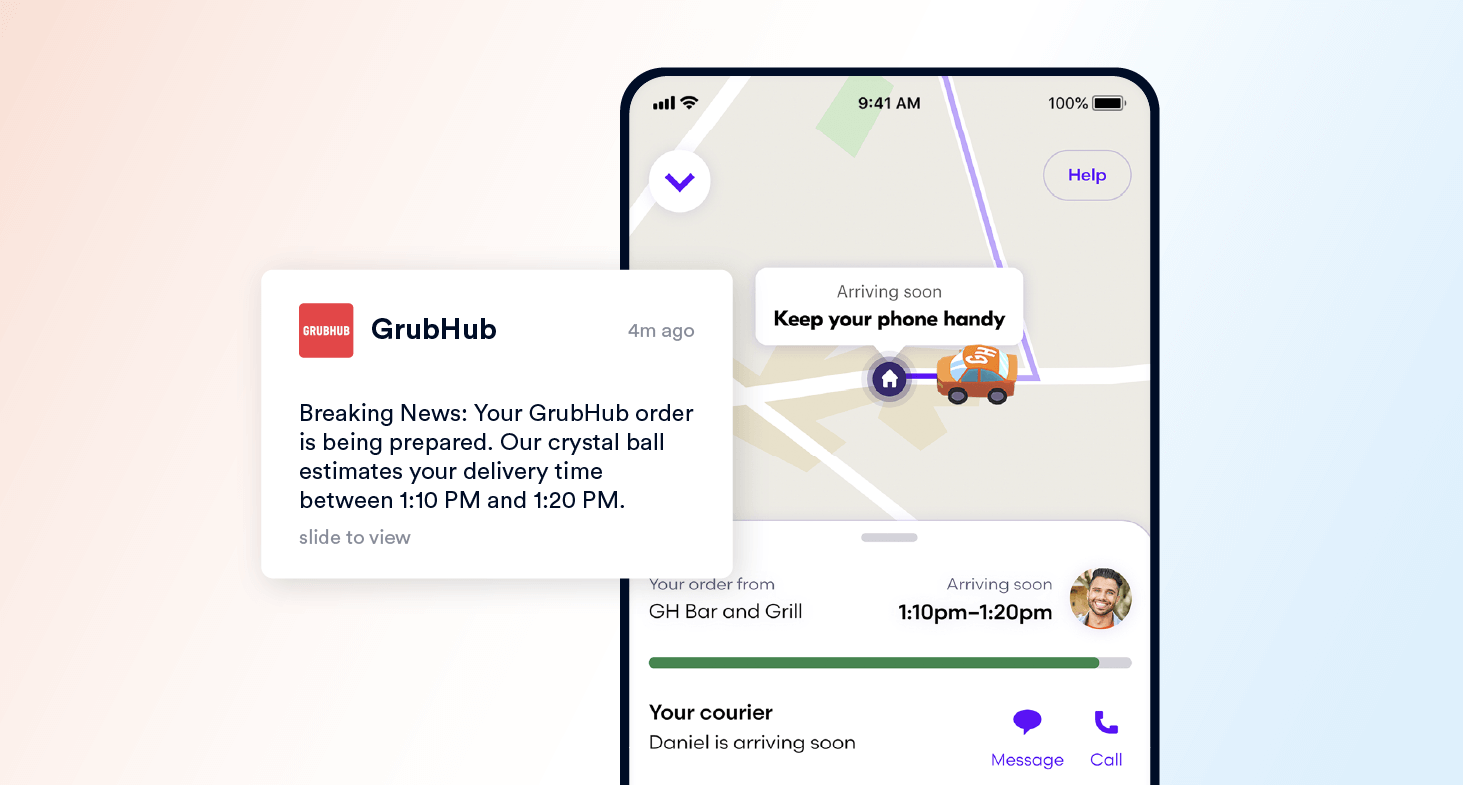
Companies like Uber Eats, DoorDash, and Grubhub depend on mobile marketing automation to personalize the user experience and drive orders. Automated tools help send timely notifications like discount codes, order tracking updates, or reminders based on previous ordering habits. These services can also automate personalized offers during peak meal times or special events, such as a user’s birthday. Automation makes it easier for food delivery platforms to retain customers and encourage repeat orders.
Health and Wellness Apps 
Fitness and health apps use mobile marketing automation to keep users engaged and motivated. Apps like MyFitnessPal or Headspace help users stay on track with their goals by sending automated reminders to log meals, track workouts, or practice mindfulness. Automation can also trigger personalized content—like sending a new workout based on past performance or a meditation session recommendation based on stress levels. It increases engagement and fosters a loyal connection with app users.
Gaming Apps
Success in the mobile games sphere is about keeping players active and monetized. Automated push notifications and in-app messages can notify users of new levels or in-game events. Sending targeted nudges at the right time helps prevent users from disengaging. Companies like Zynga or King (the makers of Candy Crush) use player behaviors to create triggers and personalized offers that drive engagement and maximize customer lifetime value.
Subscription Services
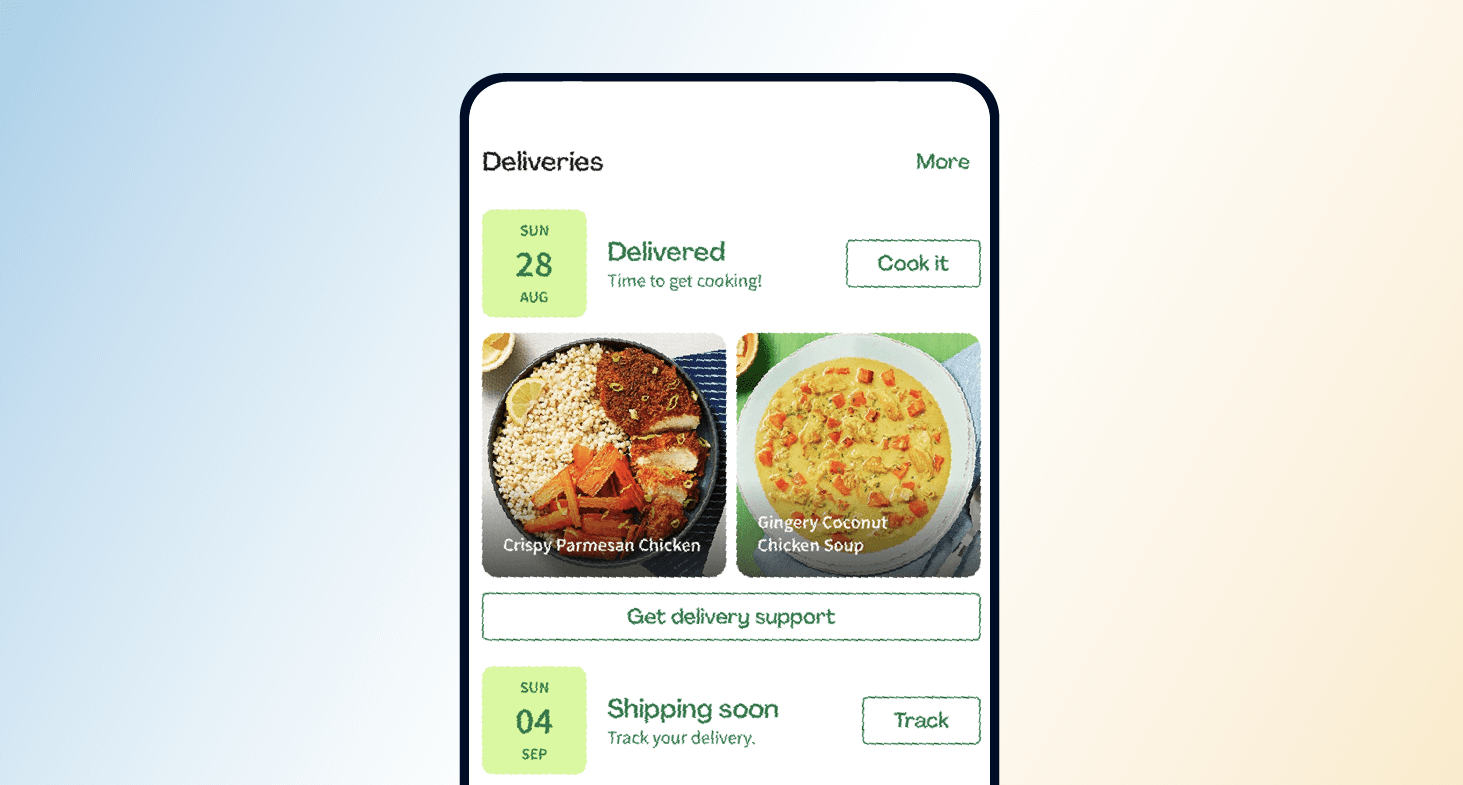
Mobile marketing automation is an absolute must for businesses offering subscription services to boost user engagement and retention. Subscription box services like HelloFresh use automation to remind customers of upcoming food deliveries and to suggest new recipe ideas. Automation also plays a crucial role in renewal reminders, ensuring users stay subscribed without manual intervention. Whether it’s renewing a monthly software plan or reminding a customer to customize their next subscription box, automation enhances the experience and helps keep users engaged long-term.
What’s the Best Mobile Marketing Automation Platform?
Choosing the right platform is crucial for the success of your mobile marketing efforts. Deciding which platform is the best choice for you depends on the unique needs of your brand, but here are some things you should consider in your search:
- Features: Look for a platform that offers the tools you need, whether it’s advanced segmentation, predictive analytics, or in-depth reporting. Some platforms excel in personalization, while others focus on multi-channel campaigns. Advanced platforms like CleverTap are a one-stop shop solution offering all these capabilities.
- Integration: Ensure the platform integrates with your existing tech stack. You don’t want to invest in a tool only to find out it doesn’t work well with your CRM, analytics tools, or other systems.
- Ease of use: The platform should be intuitive enough for your team to use without constant support from IT. A steep learning curve can slow down your efforts, so choose a user-friendly platform.
- Scalability: As your business grows, your marketing automation needs will evolve. Choose a platform that can scale with you, allowing for more users and more complex workflows.
- Customer support: Sometimes things go wrong; when they do, you’ll want a platform with excellent customer support. Look for vendors with solid reviews for responsiveness and helpfulness.
Mobile Marketing Automation Challenges and Solutions
Like most great marketing tools, mobile marketing automation comes with its own set of potential hurdles. The good news is that awareness of the common pitfalls can help you avoid them altogether. Here are some of the typical challenges and how to address them.
Challenge 1: Over-Saturation
One of the biggest risks with mobile marketing automation is overwhelming your users with too many notifications, messages, or offers. When users feel bombarded, they may disengage from your app or, worse, uninstall it altogether. It’s tempting to automate frequent outreach, but too much of a good thing can backfire quickly.
The Solution:
Find the right balance between maintaining a presence and overwhelming your audience. Start by testing different messaging frequencies. Some users respond well to daily updates, while others prefer weekly interactions. Implement A/B testing to discover the sweet spot for engagement without annoyance. Focus on quality over quantity—ensure that every message provides value, whether it’s a special offer, helpful information, or personalized recommendations. You can also use behavioral triggers to send messages at the most relevant moments, such as after a user completes an action in your app or hasn’t engaged for a certain period. By being thoughtful about timing and relevance, you’ll avoid fatiguing your audience.
Challenge 2: Privacy Concerns
Data privacy is a major issue in today’s regulatory landscape. With laws like GDPR and CCPA, users are more conscious of how their data is being collected and used. If your automation efforts come across as invasive or unclear, they can damage trust and lead to compliance issues.
The Solution:
First and foremost, ensure that all your mobile marketing automation efforts are fully compliant with the latest data privacy regulations. Transparency is key. Be upfront with users about what data you’re collecting and how it will be used. This can be done through clear, accessible privacy policies and consent forms. Beyond legal compliance, consider implementing user-friendly features that let customers control how and when they receive communications. Offering opt-in and opt-out options for different types of notifications shows that you respect their privacy and preferences. Building trust with users in this way will make them more likely to engage with your brand in the long term.
Challenge 3: Content Fatigue
When automation leads to repetitive messaging, users can become disengaged. If your content starts to feel stale or generic, users will stop paying attention, and your once-effective campaigns will start to lose steam.
The Solution:
The key to avoiding content fatigue is keeping things fresh and relevant. Regularly update your messaging and vary the types of content you send. Use dynamic content to personalize messages based on user behavior or preferences—from product recommendations to tailored offers. Rotating different types of campaigns, such as exclusive offers, educational content, or fun interactive experiences, also keeps users engaged. Remember, the more relevant your messaging, the more likely users are to pay attention. Implement segmentation and personalization tools to deliver content that resonates specifically with each group of users, ensuring your messages remain both timely and interesting.
Challenge 4: Technical Issues
Automation platforms, while powerful, can sometimes be complex. If not set up correctly, technical issues can arise, from system glitches to poorly executed workflows. This can lead to ineffective campaigns or, in worst-case scenarios, missed opportunities and frustrated users.
The Solution:
Choose a platform with strong support and clear documentation to guide you through setup and optimization. Before launching your automation campaigns at scale, conduct thorough testing to identify and resolve any technical glitches. Use test groups to trial workflows and messages and monitor how they perform. This approach will help you catch and correct issues before they reach your full audience. Additionally, invest in ongoing platform training for your team to ensure they know how to troubleshoot and optimize campaigns on the go. Building a solid relationship with your platform’s customer support team will also give you a safety net when challenges arise.
By addressing these common challenges with the right strategies, your mobile marketing automation can deliver powerful, personalized experiences that resonate with your audience and drive long-term success. The key lies in finding the balance between automation and personalization, staying transparent with your users, and ensuring your platform runs smoothly.
Case Study: Vodafone’s Success with CleverTap
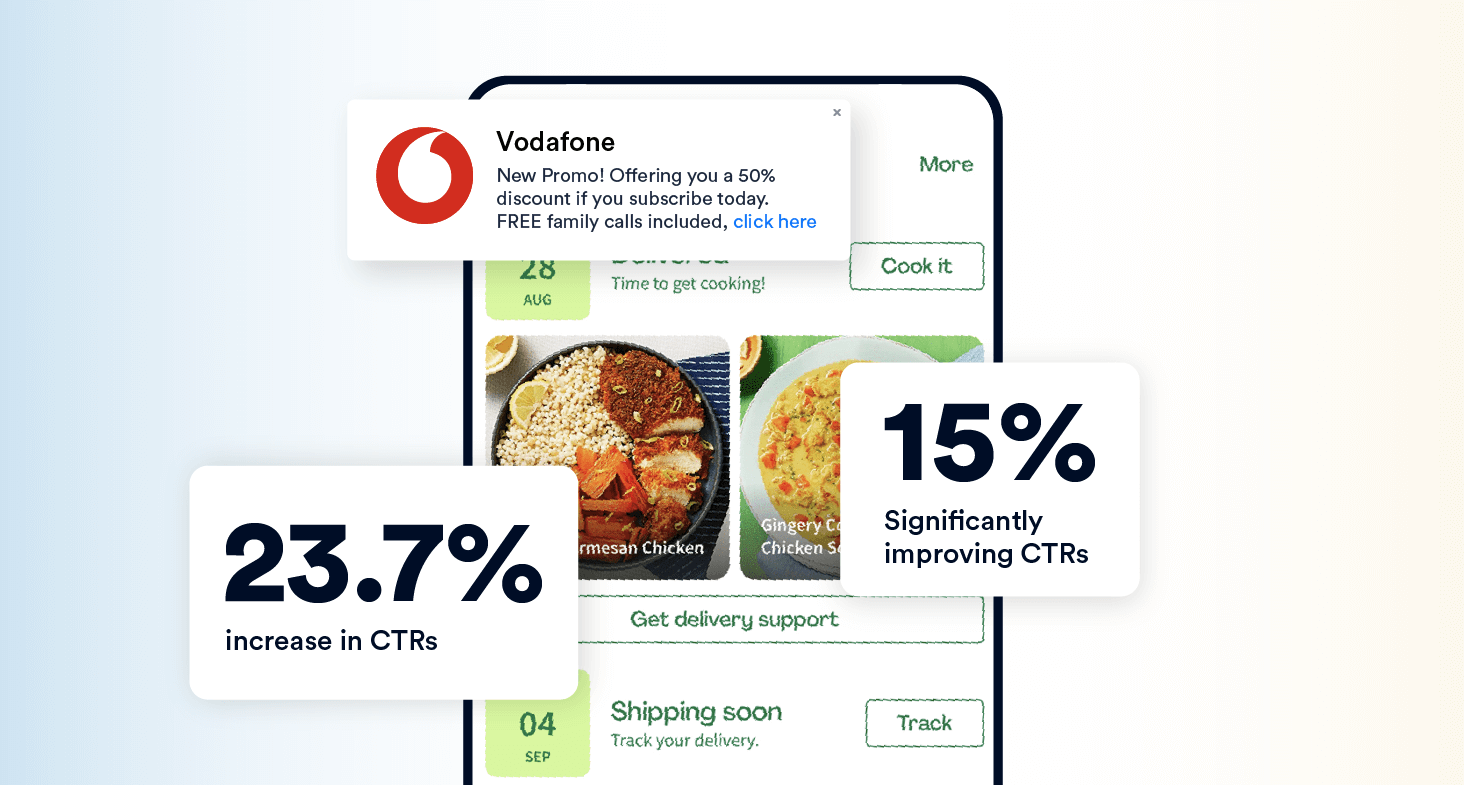
An excellent example of a major brand leveraging mobile marketing automation to boost engagement and retention is the global telecommunications giant Vodafone. Vodafone faced challenges managing a massive user base and providing personalized, timely communications through its MyVodafone app. Before adopting CleverTap, their campaigns—such as onboarding and promotional offers—were sent manually, which wasn’t scalable or as effective as needed.
By integrating CleverTap, Vodafone was able to automate its customer engagement through personalized, real-time push notifications and segmented marketing. This made for a smoother user onboarding process, significantly improving their click-through rates (CTRs) by 15% and tripling overall engagement.
A significant key to CleverTap’s effectiveness was during their re-engagement campaigns. Using CleverTap’s insights, Vodafone pinpointed a critical 2-minute window to recapture users who hadn’t completed transactions. This real-time data-driven approach led to a 23.7% increase in CTRs for these campaigns and doubled conversion rates. The Vodafone team also leveraged CleverTap’s uninstall tracking, which allowed them to run targeted win-back campaigns, further enhancing retention.
With features like Journeys to map out optimal user experiences and advanced analytics to track user behaviors, Vodafone could better understand how users interacted with the app and where they encountered friction points. This helped optimize engagement, app usability, and customer satisfaction over time.
This case study illustrates how brands, especially those with large user bases, can use advanced automation tools like CleverTap to overcome the challenges of scale while delivering a more connected, data-driven customer experience. If you’re looking to implement mobile marketing automation, Vodafone’s success demonstrates how choosing the right platform can significantly impact user retention and business outcomes.
Future Trends in Mobile Marketing Automation
As technology evolves, so does mobile marketing automation. Here are some trends to watch:
- AI and machine learning: Expect automation tools to get smarter, using AI to deliver even more personalized content and anticipate user behavior with greater accuracy. These advancements will help businesses move beyond reactive messaging into proactive engagement.
- Voice-enabled automation: As voice search and virtual assistants like Alexa and Siri become more popular, automation platforms will adapt to include voice-driven interactions, allowing users to engage with brands through spoken commands.
- Augmented reality (AR): Mobile apps using AR will leverage automation to create immersive, interactive experiences. For example, brands could send real-time offers or product information based on a user’s environment or AR interactions.
- Deeper integration with IoT devices: As more users adopt smart devices like wearables and connected home products, automation platforms will increasingly integrate with IoT, allowing brands to deliver context-aware messaging and experiences.
These trends signal exciting new possibilities for mobile marketing automation, making it a must-have tool for any forward-thinking business.
Stay Ahead of the Curve
Here’s the exciting thing about how mobile marketing automation is evolving: it’s not just about sending the right message at the right time anymore. As AI and machine learning become increasingly sophisticated, automation is able to more precisely predict and shape user behavior before it happens. So, the apps that succeed won’t just be the ones automating; they’ll be the ones evolving their strategies and taking advantage of the new tools and technologies as they emerge.
Now that you understand the power of mobile marketing automation, you can start applying it to your own business. Whether you’re just starting out or looking to optimize your current efforts, the key is remaining flexible and curious. To explore some of the most advanced mobile marketing automation functionalities on the market, visit the CleverTap Demo Center or contact us to schedule a personalized demo for your brand.
Shivkumar M 
Head Product Launches, Adoption, & Evangelism.Expert in cross channel marketing strategies & platforms.
Free Customer Engagement Guides
Join our newsletter for actionable tips and proven strategies to grow your business and engage your customers.















































